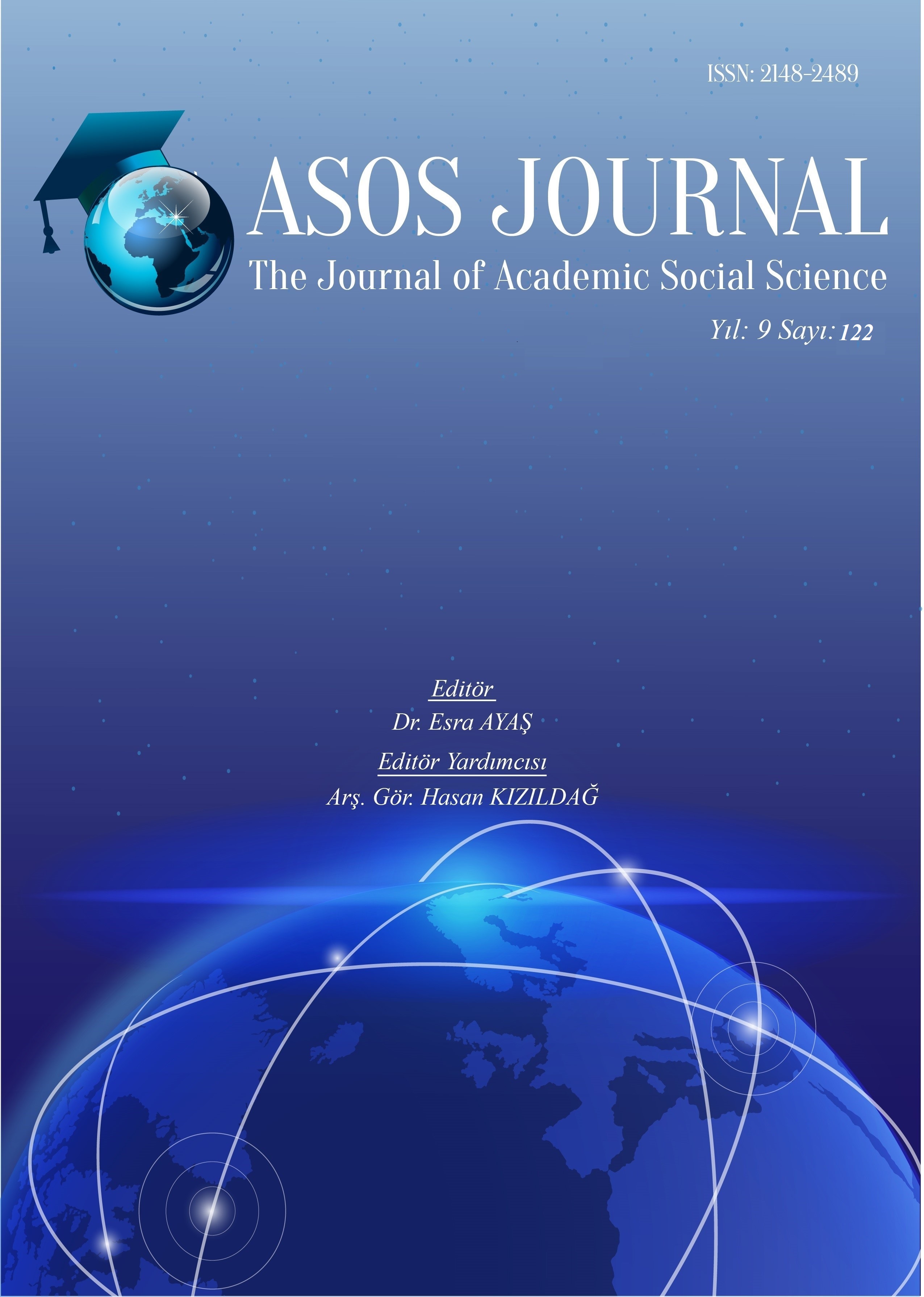STUART HALL YAKLAŞIMI ÇERÇEVESİNDE FİNİSH “SUYUN SONU GÖRÜNÜYOR” REKLAM FİLMİNE YÖNELİK ALIMLAMA ANALİZİ
Author :
Abstract
Bu makale, Stuart Hall'un “kodlama- kod açımlama” modelinin okumasıdır. Türkiye’de gittikçe azalan su kaynaklarına, su tüketimine ve kullanımına dikkat çekmek için Finish markası tarafından hazırlanan ve tüketiciler tarafından sosyal mecralarda oldukça da fazla etkileşim alan “Suyun Sonu Görünüyor” adlı reklam çalışmasının izleyiciler tarafından nasıl okunduğu nitel araştırma yöntemlerinden birini oluşturan alımlama analiz tekniği ile ortaya konulmaya çalışılmıştır. Alımlama analizi izleyicilerin medya metinlerini anlamalarını, medya içeriğini bağlam içinde anlamlandırmalarının yolunu çizmektedir. Hall (1980)’un da belirttiği gibi, medya mesajları, anlam yaratan semboller ve sembolik araçlardır, çünkü "anlam" alınmazsa "tüketim" olamaz. Anlam pratikte ifade edilmezse, etkisi de olmaz. Bu yaklaşımlardan hareketle farklı yaş, eğitim, cinsiyet ve sosyo-ekonomik düzeydeki 10 kişi ile yapılan derinlemesine mülakat tekniği ile katılımcılara reklam çalışması ve içeriğiyle ilgili olarak çeşitli sorular sorulmuştur. Verilen cevaplar sonucunda da katılımcıların ne tarz bir okuma (egemen-hegemonik, tartışmalı-müzakereli, karşıt-muhalif) yaptıkları, reklam çalışmasını nasıl yorumladıkları Hall’un yaklaşımıyla ortaya konulmuştur. Araştırmanın sonuçlarına göre katılımcı kişilerin reklam çalışması ile ilgili ağırlıklı olarak hegemonik (egemen) okuma yaptıkları, markaların sosyal içerikli, farkındalık oluşturmaya yönelik reklam çalışmalarını destekledikleri görülmüştür.
Keywords
Abstract
The purpose of the present article is to examine Stuart Hall's "encoding-decoding" model. The qualitative reception analysis technique was used to analyze the reception of the commercial film titled "The End of Water is Near," which was produced by the Finish brand in order to draw attention to excessive water consumption and diminishing water resources in Turkey and received a lot of interaction from consumers on social media. Reception analysis offers insight into how consumers comprehend media texts and interpret media material in context. Media messages, as Hall (1980) pointed out, are symbols and symbolic tools that produce meaning, because there can be no "consumption" without "meaning." It has no influence if the meaning is not communicated in practice. Using the in-depth interview technique, 10 individuals of diverse ages, educational backgrounds, genders, and socio-economic levels were asked numerous questions regarding the commercial film and its content based on these techniques. With Hall's technique, the participants' reception (dominant-hegemonic, controversial-negotiative, opposite-dissident) and interpretation of the commercial were revealed based on their responses. The participants' responses were generally hegemonic (dominant), and they favored commercials with social content and an aim to raise awareness, according to the study's findings.
Keywords
- Aligwe, H. N., Nwafor K. A., & Alegu J. C. (2018). Stuart Hall’s Encoding-Decoding Model: A Critique. World Applied Sciences Journal, 9 (36), 1019-1023.
- Giroux, H. (2004). Cultural studies, public pedagogy, and the responsibility of intellectuals. Communication and Critical/Cultural Studies, 1 (1), 59-79. Barker, C. (2003). Culturel Studies Theory and Practise. Sage Basım.
- Castleberry, G. (2016). Understanding Stuart Hall’s Encoding/Decoding Model through TV’s Breaking Bad. K. ve Roberts (Ed.), In Communication Theory and Millennial Popular Culture: Essays and Applications içinde (s. 84-95). New York: Peter Lang.
- Hadi, I. P. (2009). Penelıtıan Khalayak Dalam Perspektıf Receptıon Analysıs. Jurnal Ilmiah Scrıptura , 3 (1), 1-7.
- Hall, S. (2006). Stuart Hall and Cultural Studies: Decoding Cultural Oppression. https://us.corwin.com/sites/default/files/upmbinaries/13286_Chapter_2_Web_Byte__Stuart_Hall.pdf. Erişim Tarihi: 24.03.2021.
- Kropp, E. L. (2015). Using Social Scientific Criteria to Evaluate Cultural Theories: Encoding/Decoding Evaluated. KOME. An International Journal of Pure Communication Inquiry , 2 (3), 10-26.
- Livingstone, S., & Das, R. (2015). Interpretation/reception. ResearchGate, https://www.researchgate.net/publication/292047867_Interpretationreceptio. Erişim Tarihi: 12.09.2021.
- Öktem, A. U., & Aksoy, A. (2014). Türkiye’nin Su Riskleri Raporu. WMF Rapor. https://www.wwf.org.tr/?4180/turkiyenin-su-riskleri-raporu. Erişim Tarihi: 12.05.2021.
- Ross, S. (2011). The Encodıng/Decodıng Model Revısıted. Boston.
- Scherer, J., & Jackson, S. J. (2008). Cultural Studies and the Circuit of Culture: Advertising, Promotional Culture and the New Zealand All Blacks. Cultural Studies Critical Methodologies,8(4),507-526.
- Schroder, K. C. (2016). Reception Analysis. The International Encyclopedia of Political Communication, https://onlinelibrary.wiley.com/doi/abs/10.1002/9781118541555.wbiepc162. Erişim Tarihi: 08.08.2021.
- Shaw, A. (2017). Encoding and decoding affordances: Stuart Hall and interactive media technologies.https://journals.sagepub.com/doi/abs/10.1177/0163443717692741. Erişim Tarihi: 05.04.2021.
- Hall, S. (1980) Culturel Studies and the Centre: Some Problematics and Problems, media, language: working papers in cultural studies. S.Hall,D Hobson,A.Lowe ve P.Willis (Ed.) Culture, media, language: working papers in cultural studies içinde (s.2-36). New York.
- Hall, S. (1994) Reflections upon the Encoding/Decoding Model: An Interview with Stuart Hall, Cruz J, Lewis J (Ed) Viewing, Reading, Listening. Audiences and Cultural Reception içinde (s.253-274). Boulder: Westview Press.





